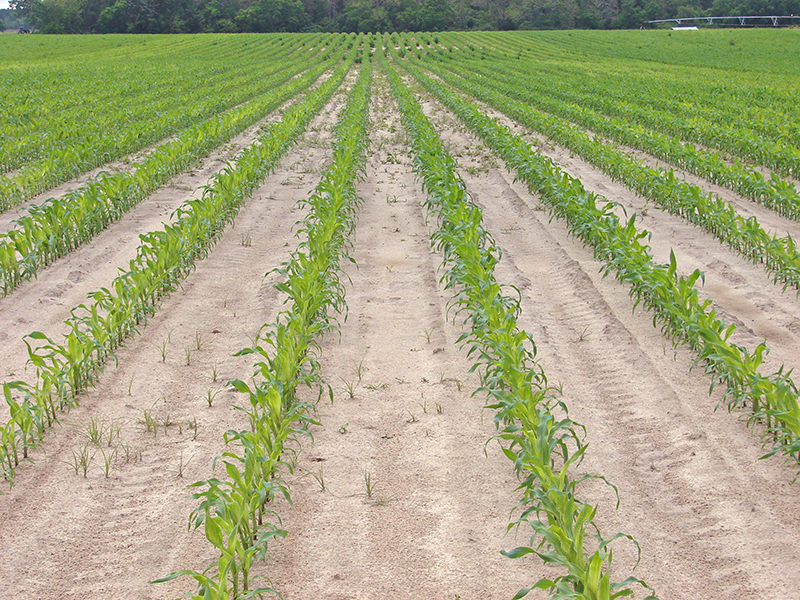
Planting date and starter fertilizer applications impact corn production. Judging by the size and color of the leaves of the corn in this photo, it is time for a banded application of nitrogen plus sulfur, while the root system is still small. Credit: David Wright, UF/IFAS
–
Planting Date
Optimum corn planting time in North Florida is different for irrigated versus non-irrigated corn. Irrigated corn should be planted in the month of March, and preferably early March, as the highest yields are normally attained from these dates. Non-irrigated corn should be planted later, and normally does best when planted around April 15-20. Corn planted on April 15 will start silking and tasseling about June 1-5, when summer rains have a higher chance of occurring. May is normally one of the driest months of the year. Early March planted corn will normally start silking and tasseling May 10-15. There may be 2-3 weeks in May with little or no rain, resulting in a lack of viable pollination on non-irrigated corn, which normally occurs over a 10-day period. Plants should be free of water stress during pollination for best yields. Days from planting to silking and tasseling vary with planting date up to 3 weeks, while time from tassel to 35% moisture is consistent at about 55-58 days for most 115 day hybrids.
Starter Fertilizer
Corn often responds to starter fertilizer. Some hybrids have an aggressive root system and may give little yield response to starter fertilizer. Corn that is purple as it emerges often has smaller roots early in the growth stage as compared to corn that does not turn purple. The purple color is due to phosphorous (P) deficiency as confirmed by plant tissue analysis. Our data has generally shown a 12-16% yield increase with use of starter fertilizer over not using any row banded nitrogen (N) or N + P. Mixtures of 28-0-0-5 and 10-34-0 with chelates for minor elements are recommended, if soil tests recommend them. Either a surface dribble or 2×2 placement gives similar results. If 40-50 lbs of N are applied as a starter fertilizer, apply it 2×2 or move the surface dribble over an inch for each 10 lbs. N/A to keep from causing germination problems due to salt toxicity. Starter fertilizer has resulted in lower ear heights in our studies, which may reduce lodging under some circumstances while also enhancing yield. The data in the table below indicates that banded applications of nutrients are more efficient than broadcast applications in plant uptake, resulting in higher yields with less nutrients, and less leaching losses in the case of nitrogen.
For more information on raising field corn, use the following publication links:
Field Corn Production Guide
Field Corn Production Problems: A Diagnostic Guide
Disease Management in Field Corn
Field Corn Pest Insects
Field Corn Weeds
- History of Conservation Tillage and Cover Crop Use in Florida - January 7, 2022
- 2021 Florida Peanut Crop Starting Strong - June 18, 2021
- Progress of Carinata Research in the Panhandle - January 29, 2021


